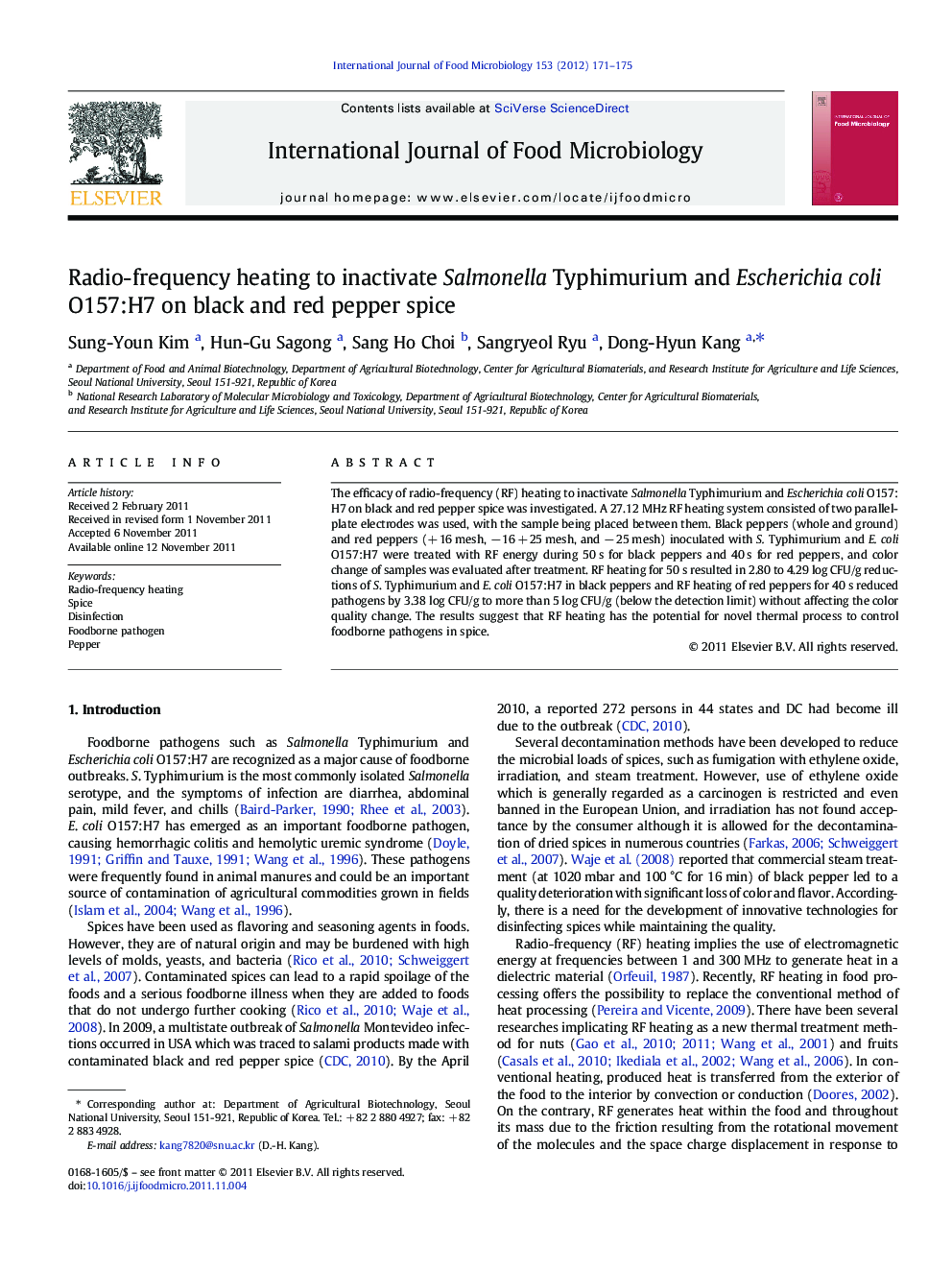| Article ID | Journal | Published Year | Pages | File Type |
|---|---|---|---|---|
| 4367837 | International Journal of Food Microbiology | 2012 | 5 Pages |
The efficacy of radio-frequency (RF) heating to inactivate Salmonella Typhimurium and Escherichia coli O157:H7 on black and red pepper spice was investigated. A 27.12 MHz RF heating system consisted of two parallel-plate electrodes was used, with the sample being placed between them. Black peppers (whole and ground) and red peppers (+ 16 mesh, − 16 + 25 mesh, and − 25 mesh) inoculated with S. Typhimurium and E. coli O157:H7 were treated with RF energy during 50 s for black peppers and 40 s for red peppers, and color change of samples was evaluated after treatment. RF heating for 50 s resulted in 2.80 to 4.29 log CFU/g reductions of S. Typhimurium and E. coli O157:H7 in black peppers and RF heating of red peppers for 40 s reduced pathogens by 3.38 log CFU/g to more than 5 log CFU/g (below the detection limit) without affecting the color quality change. The results suggest that RF heating has the potential for novel thermal process to control foodborne pathogens in spice.
► Black and red pepper inoculated with S. Typhimurium and E. coli O157:H7 were treated with RF energy. ► RF heating is highly efficacious in reducing foodborne pathogens on black and red pepper. ► No significant influences on color quality of spices were observed after RF treatment.
